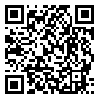Volume 2, Issue 4 (january 2019)
ohhp 2019, 2(4): 346-358 |
Back to browse issues page
Mohammad Amin Rashidi 

 , Atefeh YOUSEFIMEHR
, Atefeh YOUSEFIMEHR 

 , Abdolhossein POURNAJAF
, Abdolhossein POURNAJAF 

 , Masoud POURNAJAF
, Masoud POURNAJAF 

 , Mehrdad KAZEMI3
, Mehrdad KAZEMI3 

 , Azim AKBARI6
, Azim AKBARI6 

 , Meghdad KAZEMI3 *
, Meghdad KAZEMI3 * 




 , Atefeh YOUSEFIMEHR
, Atefeh YOUSEFIMEHR 

 , Abdolhossein POURNAJAF
, Abdolhossein POURNAJAF 

 , Masoud POURNAJAF
, Masoud POURNAJAF 

 , Mehrdad KAZEMI3
, Mehrdad KAZEMI3 

 , Azim AKBARI6
, Azim AKBARI6 

 , Meghdad KAZEMI3 *
, Meghdad KAZEMI3 * 


Department of occupational health engineering, hygiene faculty, Ilam university of medical sciences, Ilam, Iran/Ph.D student of occupational health engineering, Department of occupational health engineering, hygiene faculty, Tehran university of medical s
Abstract: (2278 Views)
Introduction: Job stress is an annoying emotional response caused by a mismatch between the job requirements and the individual's abilities. The aim of this study was to determine the status of occupational stress and its effective factors among the employees of Ilam University of Medical Sciences.
Methods: This descriptive-analytic study was conducted on 153 employees of Ilam University of Medical Sciences using simple random sampling method in 2016. Philip. L. Rice's Job Stress Questionnaire was used to collect data. The data were analyzed using SPSS software version 16 and descriptive statistics. Furthermore, one-way ANOVA (Scheffe post hoc test), Chi Square, Independent Sample T-test, and Spearman’s correlation were run.
Results: The total mean score of job stress was 152.25 ± 31.29 in the study population. This indicates that 68.6 percent of the participants were at average level of occupational stress. Spearman’s correlation test showed a reverse and significant correlation between the subscales of interpersonal relationships, physical conditions of the work environment, and age group variables among headquarters and campus staff (p <0.05, r=0/246, r=0/163). Moreover, ANOVA test showed a significant statistical difference between the subscale of interpersonal relationships and the type of employment (p <0.05).
Conclusion: In this study, variables such as the type of employment, age, and interpersonal relationships were introduced as the most important factors affecting the occupational stress. Therefore, it is necessary to pay more attention to the mentioned variables in choosing the people with regard to the desired job.
Methods: This descriptive-analytic study was conducted on 153 employees of Ilam University of Medical Sciences using simple random sampling method in 2016. Philip. L. Rice's Job Stress Questionnaire was used to collect data. The data were analyzed using SPSS software version 16 and descriptive statistics. Furthermore, one-way ANOVA (Scheffe post hoc test), Chi Square, Independent Sample T-test, and Spearman’s correlation were run.
Results: The total mean score of job stress was 152.25 ± 31.29 in the study population. This indicates that 68.6 percent of the participants were at average level of occupational stress. Spearman’s correlation test showed a reverse and significant correlation between the subscales of interpersonal relationships, physical conditions of the work environment, and age group variables among headquarters and campus staff (p <0.05, r=0/246, r=0/163). Moreover, ANOVA test showed a significant statistical difference between the subscale of interpersonal relationships and the type of employment (p <0.05).
Conclusion: In this study, variables such as the type of employment, age, and interpersonal relationships were introduced as the most important factors affecting the occupational stress. Therefore, it is necessary to pay more attention to the mentioned variables in choosing the people with regard to the desired job.
Type of Study: Research |
Received: 2018/11/17 | Accepted: 2019/05/21 | Published: 2019/02/19
Received: 2018/11/17 | Accepted: 2019/05/21 | Published: 2019/02/19
| Rights and permissions | |
 |
This work is licensed under a Creative Commons Attribution-NonCommercial 4.0 International License. |

